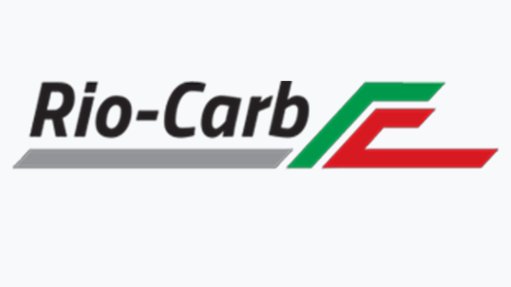Once-troubled mineral sands miner shares what’s now bringing tangible community benefits

Richards Bay Minerals community trust research covered by Mining Weekly’s Martin Creamer. Video: Darlene Creamer.
JOHANNESBURG (miningweekly.com) – Independent research commissioned by Rio Tinto group’s Richards Bay Minerals to benchmark what works for community trusts and conversely what fails, was this week shared with South Africa as a whole in a media briefing.
The report comes about following Richards Bay Minerals being prone to considerable past violence, including the murder two years ago to the day of GM Nico Swart and the murder nearly three years ago of Richards Bay Minerals-linked community leader Judia Mbuyazi.
Last week, Richards Bay Minerals’ similar briefing with industry leaders and community trustees thoroughly discussed the findings around best practices and recommendations contained in an 80-page report compiled by Tshikululu Social Investments to improve the lives and livelihoods of communities around the operations of the mineral sands mining company.
In November last year, Richards Bay Minerals applied to the High Court with the aim of amending each of its four community trusts and putting the benefit of its mining communities front and centre.
Richards Bay Minerals initiated the research because it was not seeing the positive social impact that it anticipated would arise from its trusts in the broad-based sense.
“Therefore, achieving positive social impact is what the study was all about,” Rio Tinto Iron-Ore and Titanium African operations MD Werner Duvenhage said in response to Mining Weekly. (Also watch attached Creamer Media video.)
“The study is now helping us to have tangible benefits around what we are creating and leaving behind as a mining company. We really want to see the benefits rolling through to the people on the ground,” Duvenhage emphasised.
“Governance, first of all, is absolutely critical from the outset when setting up these trusts,” Tshikululu Social Investments CEO Tracey Henry said in response to Mining Weekly, with governance taking into account the trust deed, trustee selection and the right skills.
“Also, key is understanding who the beneficiaries are, who the communities are, and ensuring that everything done is focused on empowering those communities to achieve social impact.
“The third point I would raise is around accountability towards communities and trustee accountability in terms of how these trusts are governed,” said Henry, who singled out three trusts which she regards as being well-structured.
The first is the Project Alchemy/Lefa La Rona Trust established by Anglo American Platinum in 2011, a R3.5-billion community development and empowerment transaction to provide equity ownership to mine host communities around four operations and labour-sending areas, which overcame many teething problems.
The second is the Sishen Iron Ore Company–Community Development Trust of Anglo American’s Kumba Iron Ore, set up around 2008 as a complex structure with many committees and a history of going through some tough times that resulted in restructure following poor governance.
“Then the third example is the Royal Bafokeng Nation Development Trust, which has a great model, particularly in terms of how it engages its nation and communities in the activities of that trust,” said Henry.
R36-BILLION ASSETS ENDOWED
Over and above allocations towards staff schemes and strategic investment partners, an estimated R36-billion worth of assets have been endowed to community structures as part of black economic empowerment deals since 2002.
Reviewed by Tshikululu after being commissioned in 2018 to understand the empowerment endowments were 11 “substantive” community trusts out of the very many community trusts that exist in South Africa.
Tshikululu discovered that if done well and set up properly, these community trusts can become important vehicles to empower communities and to achieve positive social impact.
Identified as being crucial, along with the leverage of the structures to achieve social impact in a sustainable way, is the management of governance, trustees, investment, and sustainability of community trusts beyond the life-of-mine,
Because a lot of these trusts, particularly in the mining sector, exist within the legislative framework of the Trust Property Control Act, Companies Act, Mineral and Petroleum Resources Development Act, and Broad-Based Economic Empowerment Act, it is important for community trust structures to understand, monitor and comply with a broad range of regulations.
Most of the mining community trusts are registered as trusts, some with non-profit companies as vehicles and others as non-profit companies and trusts as a vehicle.
Usually there is also a shareholder in the founding companies.
Just over half of the 11 trusts studied had multiple trusts and one in the independent renewable energy power producer sector has a legal requirement for more than one trust.
Most of the trusts have at least one entity with a public benefit organization registration, which also comes with requirements in terms of reporting to South African Revenue Services.
Most trusts have a board of trustees, others have sub-committees and not all term limits and suspension clauses.
To achieve best practice, the research recommends that structures must support the strategy to achieve social impact.
“It’s really important to streamline what is often a very complex structure of trusts to improve efficiencies, effectiveness and governance and community level trusts can still be part of the structure, but with more coordination and oversight from the intermediaries that disperse the funds,” said Henry.
Specific tax advice is needed around trusts linked to public benefit organization requirements.
When it comes to community trusts and the legislative and governance frameworks that govern them, it is important from the onset to ensure that the requirements are understood and that there is compliance.
This also relates to the trust composition, appointment, and training and only half the trusts had community trustees appointed by formal election processes involving community voting or representative community forums.
“Only seven of the 11 trusts had formal trustee induction processes, with very few doing ongoing training,” said Henry.
When it comes to trustee remuneration, a standard approach to the benchmarking of trustee fees has not been identified.
To achieve best practice, a balance between independent and founder trustees and community trustees is appropriate, and an independent chairperson a must.
Community trustees can represent communities’ interests and create legitimacy for the trusts but what needs to be guarded against is political influence in the representation of the community trustees.
In terms of the size of the trust, between six and ten trustees with complementary skills are recommended to make up a well-functioning board, with financial and legal skills being critical on all boards.
Formal training, induction and fixed terms are recommended for all trustees, and board effectiveness needs to be reviewed yearly, with clear processes in place.
It is seen as important that trusts are viewed as entirely distinct from the founder companies but it is recommended that they can complement each other and leverage off the structures that already exist within the communities to avoid duplication of effort.
There should be a good balance between founding company oversight and community trust independence, with mechanisms in place to enable reporting to the founding company but so that the founding company does not have direct influence in the trusts’ activities and functioning.
“But we do believe that the founder trustees who sit on these community trusts should be responsible for reporting back in an agreed and transparent manner,” said Henry.
The frequency of report back should be maintained so that founder funds are only released if the community trust receives an unqualified audit to ensure that the intended benefits reach beneficiaries.
Who the beneficiaries are must be clearly defined and articulated in the trust deed under the heading of geographic demarcation or class.
That defining of the beneficiaries needs to rely on verifiable data as well as engagements with the community to understand who those beneficiaries will be.
In terms of the trust deed, there are alignment requirements under the Public Benefit Organisation structure to avoid individual enterprise benefit.
The trusts typically identify the focus areas of their projects in alignment with government development objectives or areas within communities, with emphasis placed on having the correct skillsets for programme delivery.
Article Enquiry
Email Article
Save Article
Feedback
To advertise email advertising@creamermedia.co.za or click here
Press Office
Announcements
What's On
Subscribe to improve your user experience...
Option 1 (equivalent of R125 a month):
Receive a weekly copy of Creamer Media's Engineering News & Mining Weekly magazine
(print copy for those in South Africa and e-magazine for those outside of South Africa)
Receive daily email newsletters
Access to full search results
Access archive of magazine back copies
Access to Projects in Progress
Access to ONE Research Report of your choice in PDF format
Option 2 (equivalent of R375 a month):
All benefits from Option 1
PLUS
Access to Creamer Media's Research Channel Africa for ALL Research Reports, in PDF format, on various industrial and mining sectors
including Electricity; Water; Energy Transition; Hydrogen; Roads, Rail and Ports; Coal; Gold; Platinum; Battery Metals; etc.
Already a subscriber?
Forgotten your password?
Receive weekly copy of Creamer Media's Engineering News & Mining Weekly magazine (print copy for those in South Africa and e-magazine for those outside of South Africa)
➕
Recieve daily email newsletters
➕
Access to full search results
➕
Access archive of magazine back copies
➕
Access to Projects in Progress
➕
Access to ONE Research Report of your choice in PDF format
RESEARCH CHANNEL AFRICA
R4500 (equivalent of R375 a month)
SUBSCRIBEAll benefits from Option 1
➕
Access to Creamer Media's Research Channel Africa for ALL Research Reports on various industrial and mining sectors, in PDF format, including on:
Electricity
➕
Water
➕
Energy Transition
➕
Hydrogen
➕
Roads, Rail and Ports
➕
Coal
➕
Gold
➕
Platinum
➕
Battery Metals
➕
etc.
Receive all benefits from Option 1 or Option 2 delivered to numerous people at your company
➕
Multiple User names and Passwords for simultaneous log-ins
➕
Intranet integration access to all in your organisation



















